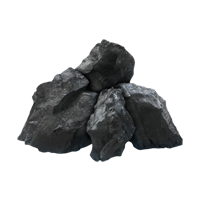Martin Referred to It As a "Turn and a Half"

Margaret Martin Dollar submitted her father’s name and some of the following information to Miners’ Memorial. Donna Taylor Beasley, daughter of Evelyn Martin Taylor and granddaughter of miner Michael Martin, Sr. wrote most of the information provided below.
Michael (Mike) Martin was born on Feb. 24, 1887 in Hazelton, Penn. He was the son of what were then Austrian-Hungarian immigrants. This land is now considered part of the Czech Republic. He married Margaret Osterfelt. Their children are Michael Jr. (deceased), Margaret (Dollar), Dorothy (Beck), Edward G. (he died in 1943 in India during W. W. II), Virginia (Taylor), Alfred, Evelyn (Taylor) and Catherine (McClure) Martin.
In 1898, at the age of 11, Grandpa became a part-time coal miner. In those days, children were only required to attend school for sixty days a year, or the equivalent of three months, after which time they were permitted to help their fathers in the mines. In order to work in the mines, a child had to be twelve years old. My great grandparents needed my grandfather to work in the mine so they gave his birth date as 1886. Actually he was born in 1887, but the Records Office in Pennsylvania …had burned down, so there was no official record.
When a son worked in the mines with his father, he would receive half the wages of his father for half the amount of work. This is what my grandfather referred to as a “turn and a half”. When a child reached the age of fourteen, he could quit school and begin working full time in the mines. So, at the age of 14 (really 13) my grandfather went to work “full time” in the mine. My great-grandfather loaded six cars of coal in ten hours. He received one dollar and sixty cents per day—my grandfather received seventy-five cents per day.
In 1906, labor prices went up and Grandpa became a “tonnage” worker. This meant he received $.60 for every ton loaded. One car equaled approximately one ton. In different states the weight of a ton differed; in Kansas one ton might consist of two-thousand pounds while in Montana it was two-thousand, 400 pounds. Mining was not steady work. There was always more work in the winter than in the summer because of the need for fuel for heating purposes. Whenever work was slow, Grandpa would move on to a place where work was available. He mined in Kansas, Colorado, Wyoming, Oklahoma, Missouri, Washington, and Montana.
While working in Black Diamond, Washington, he experienced a mine explosion, which trapped 17 men. This mine was 2.400 feet deep, declining at a 67 degree angle. It was impossible to reach many of the men, so the mine was sealed and a plaque was engraved with each man’s name on it.
In another mine disaster Grandpa witnessed in Kansas, my great uncle Joe Osterfelt was killed. He was loading a coal car onto the elevator. When the elevator began going up, Uncle Joe was crushed between the elevator cage and the mine shaft.
My grandfather claims to have done almost every job required of a miner. He even worked as a “trapper”, opening doors for the mules. He told me that once a mule was taken into a mine, it was never brought out again.
Grandpa considered “shooting” the most dangerous job of a miner. For this reason, it was the highest paid position. Two men would go into the mine, after all the other men were out, to light fuses to prepare the mine for the next day’s work. Black powder was used for this instead of dynamite because dynamite caused too much waste of the coal. Many men were killed completing this job. Grandpa said he tried it once or twice until his mother found out and put a stop to it.
In Grandpa’s mining days, electric lamps had not been invented. Instead, they used oil or carbide lamps. These were quite dangerous, since an open flame lighted them. Later . . . battery operated lamps came into use.
The most money Grandpa can ever remember making was during World War I when there was a great demand for coal. At this time, he made up to $7.50 per day. This he said was “good money”.
Grandpa worked in the coal mines for 36 years. In 1936 he became township trustee and assessor for Crawford County. He held this position until World War II broke out when he went to work for a war plant assembling ammunition. In 1943, he moved with his wife and eight children to California, where he went to work for another government plant. In 1957, he retired at the age of 72.
He worked in Mine No.18 located near Englevale. He also worked in mines around Frontenac and Pittsburg.
He died in May 1968.
